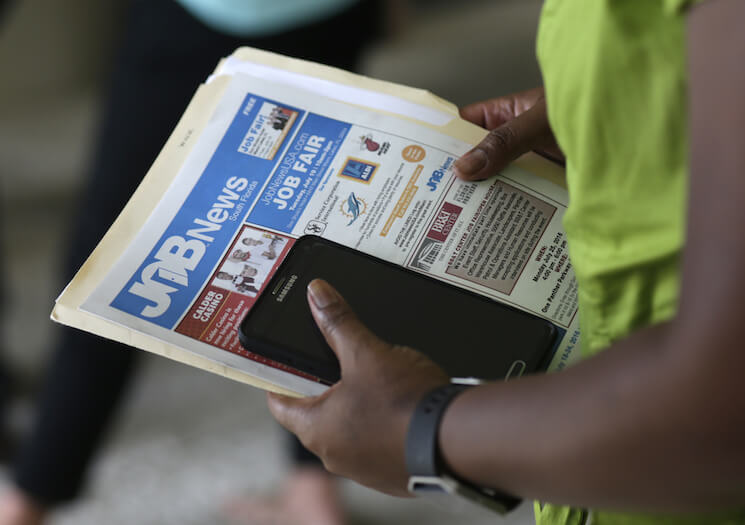Geographic mismatch might not be a big deal for U.S. unemployment

Unemployment rates vary quite a bit among U.S. states. In August, the unemployment rate in South Dakota was only 2.9 percent. Compare that to the unemployment rate of 6.8 percent in Alaska. With such a difference in unemployment, it’s worth considering why more people don’t move to areas with lower unemployment rates. Perhaps policymakers should try to influence people to move from areas with higher levels of unemployment to parts of the country where the job market seems to be in better shape. Such a policy would be quite successful if these geographic mismatches were very common in the U.S. labor market.
Certainly such mismatches are present in the United States, but a new paper casts doubts on how much eliminating geographic barriers to employment would reduce unemployment. In a new working paper, economists Ioana Marinescu of the University of Chicago and Roland Rathelot of the University of Warwick look at the geography of job seekers and open jobs in the United States. They look at the distribution of job openings and applications in data from the job board website CareerBuilder.com between April and June 2012. While the data set obviously doesn’t cover all vacancies and applications in the U.S. labor market, it is representative enough of the total population to be useful for this exercise.
Looking at job applications, Marinescu and Rathelot find that there is an aversion among workers to applying for jobs further away from their homes. Workers are 35 percent less likely to apply for a job that’s more than 10 miles away from the zip code where they live. This fits the geographic mismatch story, which means reducing that aversion could help improve job matches in the labor market.
But Marinescu and Rathelot also find that those long-distance applications aren’t that big of a deal in the labor market. Most applicants are already fairly close to job openings and therefore geographic mismatch isn’t much of a problem overall. The two economists use a model of job searching to understand how much unemployment would go down if job applicants were moved around in order to maximize the amount of hiring in the labor market. The result would be a level of unemployment that’s only about 5 percent lower than unemployment levels at the time.
A 5 percent reduction in the level of unemployment in spring of 2012 would have pushed the unemployment rate down to about 7.8 percent, compared to the actual 8.2 percent rate at the time. A 0.4 percentage point decline in the unemployment rate is nothing to scoff at. But remember, that reduction is from moving people around so that hiring is maximized and the downsides of moving for individual families and communities—such as having to change schools or church, and the costs associated with finding a new home—may be quite high. The geographic mismatch of jobs and jobs seekers did push up the unemployment rate a bit, but it wasn’t a major driver. Reducing geographic barriers to job hunting in the United States would likely be beneficial, but in many ways it might just be a sideshow.

